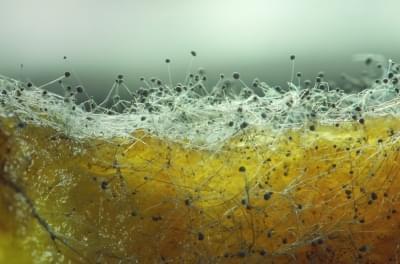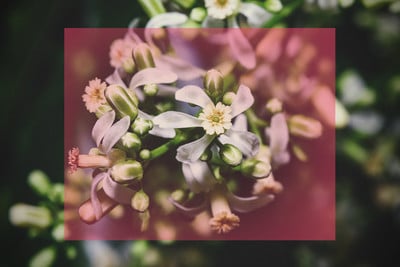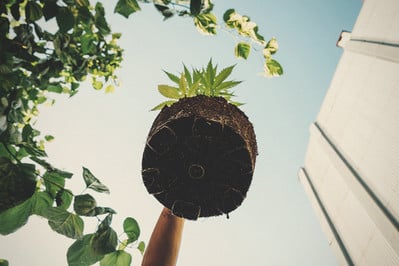.

How and When to Use Foliar Feeding on Cannabis
Foliar sprays are an often underused tool in the cannabis grower's arsenal. When used correctly, though, they are an incredibly effective (and easy) way to provide nutrients to plants in need, and to fight off infestations. Follow along to become acquainted with the dos and don't of this technique.
Contents:
Generally, when we think of how plants absorb nutrients, our minds go to their root systems, while we picture the leaves as the centre of photosynthesis. While this is broadly true, it is not the whole picture. Plants can, in fact, absorb nutrients through their leaves with a very high degree of efficiency, and growers can use this to their, and their plants’, benefit.
In this article, we look at the use of foliar sprays for cannabis plants. These sprays can be used to feed plants when they lack certain nutrients, and to deliver organic pesticides directly to the leaves in case of infestation.
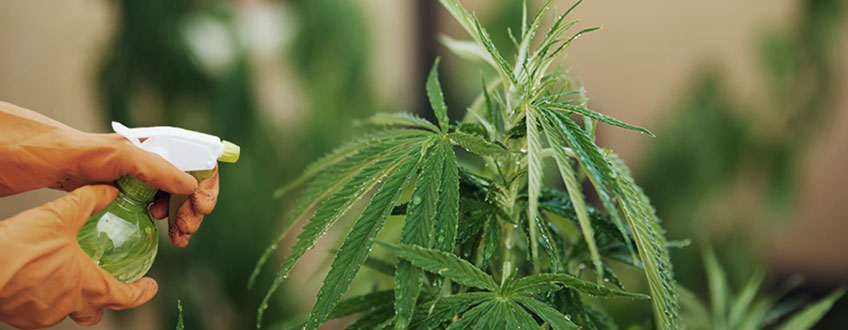
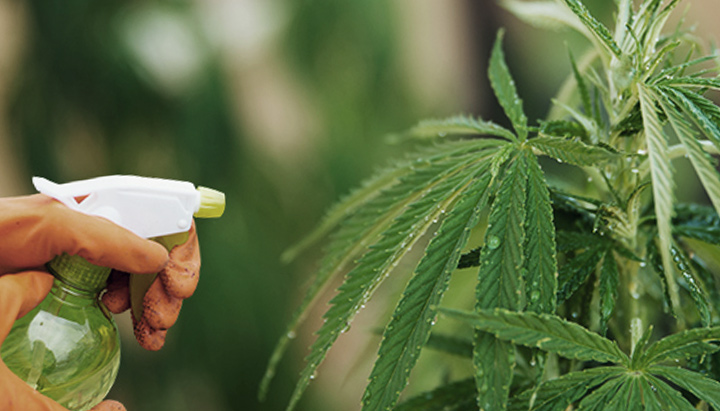
Should You Foliar Spray Cannabis?
The term foliar spray is broad, and has multiple applications depending on what you want to achieve. Ultimately, the term describes a spray that is applied to the foliage of a plant—what this spray seeks to achieve is determined by what’s in the solution.
But there are two main instances in which you could benefit from using a foliar spray. One is in case of infestation; certain organic pesticides can be applied to the foliage of plants to deter or kill problematic insects.
You can also employ supplemental foliar feeding. By spraying fertiliser onto the leaves, you can deliver an easily accessible hit of nutrients that plants absorb through their stomata—the tiny pores that cover the leaves. While this can’t be used in place of feeding via the roots, it can be used in case of nutrient deficiencies, or even as a regular, light supplement.
Some growers only use foliar sprays in acute circumstances; when there is an infestation or a nutrient deficiency. Others use them preventatively to avoid either of these circumstances.
Benefits of Foliar Spraying Cannabis
The benefits of foliar spraying weed are as follows:
- Provides easily accessible nutrients in case of deficiency, and is particularly efficient in delivering magnesium, calcium, zinc, iron, and manganese.
- Can be used to spray a range of organic, non-toxic pesticides directly onto the affected areas of plants, in case of infestation.
- Can be used to supplement nutrients throughout the plant’s life cycle as a preventative measure.
- A neem oil foliar spray can work preventatively against insects.
- High concentrations of nutrients in foliar sprays do not negatively affect concentrations of nutrients in the soil, nor do they disrupt the soil biome.
When Should You Use a Cannabis Foliar Spray?
As mentioned, there are different instances in which you should/could foliar spray cannabis plants:
- Nutrient deficiency: If you identify a nutrient deficiency, then a foliar spray is the best way to immediately get a dose of the required nutrients into your plant. Absorption rates can be as high as 95%, and results can be seen in as little as 48 hours.
- Infestation: If you notice that your plants are playing host to insects or fungi, then a potassium soap foliar spray is an effective and safe way to deal with the problem.
- Prevention: A foliar spray can also be used every week or two to prevent various issues. A CalMag solution can give your plants micronutrients that can sometimes be difficult to deliver via the roots. Alternatively, a neem oil solution sprayed onto the leaves will keep any pests at bay and help to protect your plants from a variety of threats.
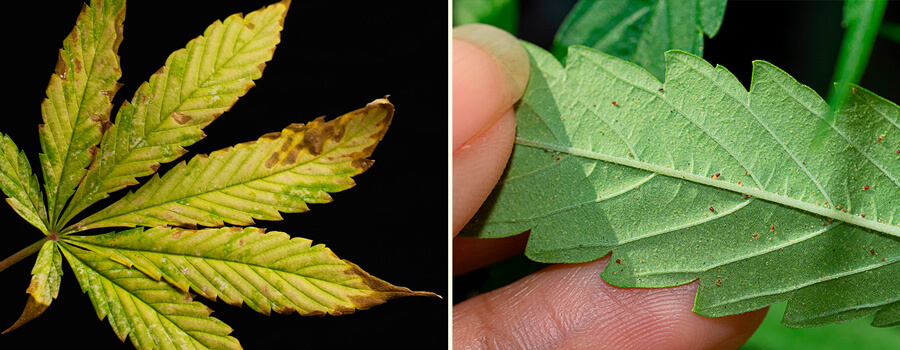
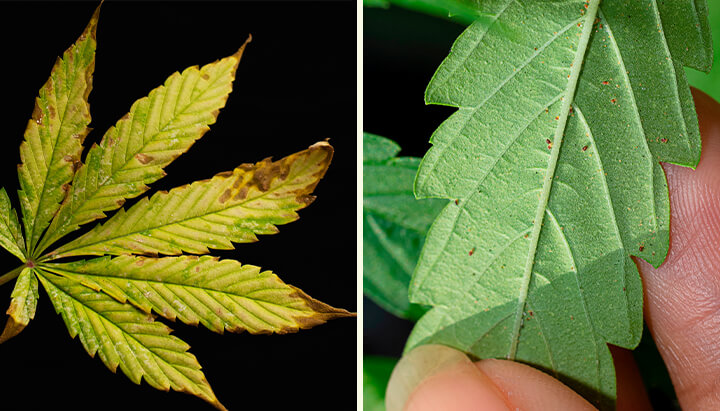
When Shouldn’t You Use a Foliar Spray?
Equally important to know is when not to use a foliar spray for marijuana. During the flowering period, it’s best to avoid spraying your plants, if possible. Many solutions (such as neem oil) will spoil the taste of buds, even if they can still be safely consumed. But more importantly, the excess moisture introduced with a foliar spray can greatly increase the chances of mould occurring on sensitive buds.
If you really have to use a spray during flowering, then apply it only where necessary, and be accurate. Certainly avoid spraying the flowers, and only spray the necessary fan leaves.
What Is the Best Type of Sprayer to Use?
A simple handheld misting bottle is all you need to apply a foliar spray. These are very cheap and easy to acquire. If you only use one, make sure you wash it well after each use.
Alternatively, you can use a large pump spray if you have a bigger grow. These will cover plants much more easily, but will also make a space quite wet and humid. For outdoor and large grows, they are helpful, but for small grow tents, they can make everything too damp.
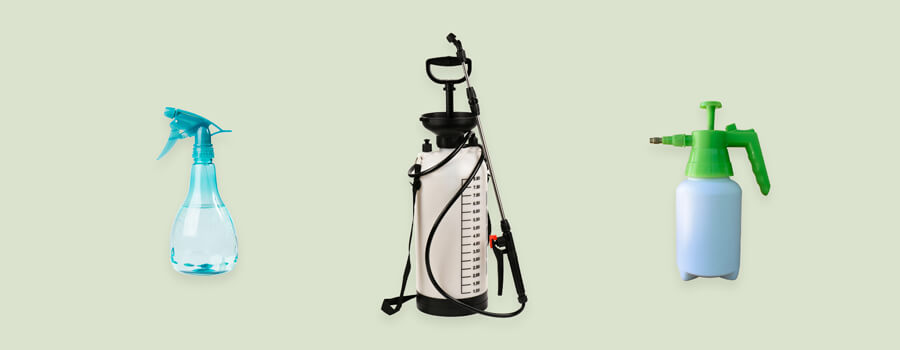
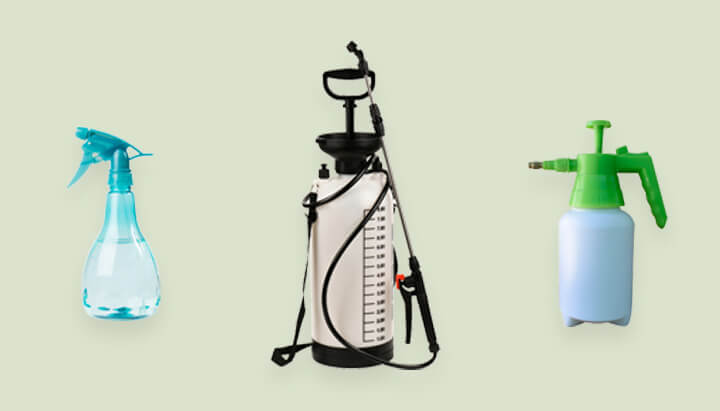
How to Foliar Spray Cannabis
In what follows, we will outline how exactly to go about foliar spraying cannabis plants.
- The best time for foliar spraying is either early in the morning or late in the evening. If you grow outdoors, buds getting wet can be a normal occurrence due to rainy weather. If a spray with some type of fungicide is the only way to save your precious outdoor crop from a mould infestation, use a natural, safe, and residue-free product only.
- Do not spray in direct sunlight. The sunlight can not only burn your plants through the “lens effect” from droplets on the leaves, but it can also degrade active substances and nutrients contained in your solution. In the evening, the plant’s pores are fully open, which allows for a quicker intake compared to during the day. If you grow indoors, the best time to spray is at the beginning or end of the dark period.
- Avoid spraying when it is too hot or too cold. In hot temperatures, your plant’s stomata will be almost closed, making a foliar spray much less effective. On the other hand, when it is too cold, spraying could promote fungal growth. Spraying early in the morning can be best since this allows your plants to dry during the day, reducing the risk of mould.
- Don’t spray when you expect bad weather. Rain can make your foliar spray a waste of time, washing away or diluting your spray solution. The same goes for strong winds. When you spray outdoors, wait for rain and stormy weather to pass. When you spray indoors, it can be a good idea to turn off ventilation for an hour or two. This allows the solution to be absorbed by the leaves without any major disturbances.
- Don't forget the undersides. When you spray, spray the entire plant (except the buds)—in particular the undersides of the leaves. There are at least two good reasons for this. Many pests, such as spider mites and other aphids, are often located on the leaf undersides. This is also where more of the stomata are located.
- Take note of the recommended nutrient strengths of your solution. Most of the time, foliar feeding requires a much lower nutrient concentration than feeding your plants via the soil. If the solution that you are spraying doesn’t specify the proper amount for foliar application, start with half the recommended dose.
- Test your spray first to ensure that your plants don’t get irrevocably damaged. Rather than going full-out and spraying your entire crop with an untested product you just got from the internet, perform a test on a single leaf first. Wait for a day to see whether the application causes any damage before moving forward with a full feeding regimen.
- Avoid spraying during flowering. Spraying the buds can be bad for a number of reasons. Depending on your spray solution, this can lead to anything from a spoilt taste to an increased chance of mouldy buds.
Foliar Feeding With Grow Boosters and Stimulants
Given the speed in which nutrients are provided to plants via foliar application, this also makes it effective for providing crops with boosters and stimulants when they need them. There are a wide range of products out there, most of which actually require foliar feeding as the method of application.
Some growers make their own foliar growth stimulators, for example by mixing liquefied aloe vera leaves with water, or by using any number of DIY foliar stimulant recipes that you can find online.
Other options include:
- Fish oil
- Ionic nutrients
- Fermented fruit juice (FFJ)
Foliar Spraying With Fungicides and Insecticides
Foliar sprays are a common and effective way to treat many cannabis pests and diseases, such as mites, powdery mildew, and others. A popular substance that acts as both an immediate treatment and preventative measure is neem oil.
Neem oil has the advantage of being a natural insecticide that also has some fungicidal properties. To dissolve the oil and maximise effectiveness, cultivators use a neem oil foliar spray together with aloe vera juice and some type of emulsifier, like potassium silicate. Weekly sprays during the vegetative phase can strengthen plants and increase their resistance against pests and pathogens.
Meanwhile, a foliar spray made with potassium soap (insecticidal soap) is an excellent option to tackle an infestation of harmful insects. It is particularly effective against aphids, which are some of the most common cannabis pests. A mix of neem oil dissolved in potassium soap is doubly effective. The potassium soap gets rid of the pest on contact, and the neem oil helps to prevent future attacks while strengthening your plant’s defences.
Many other natural ingredients, from cayenne pepper to nettle, cinnamon oil, and even plain milk, can help to combat powdery mildew and other fungal pathogens naturally, without causing any harm to your plants.
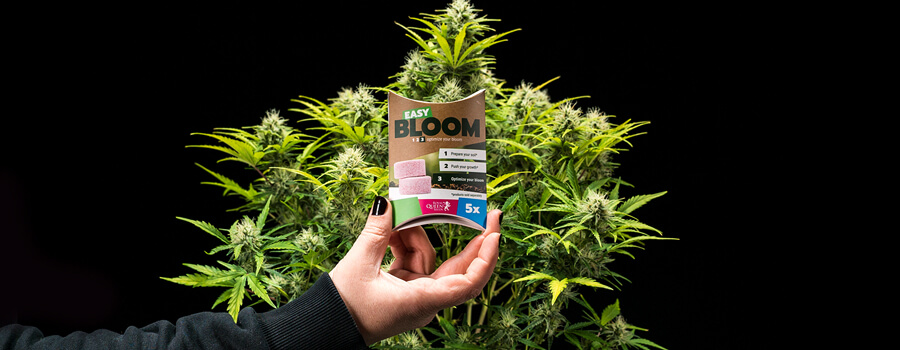
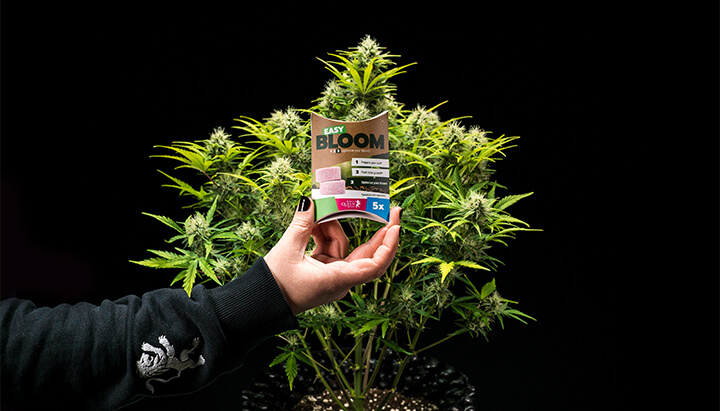
Foliar Spraying and Hydroponics
Foliar feeding can also be used in hydroponic grows, though you must be more careful with your application. Also, be aware that nutrients added to the reservoirs of hydro setups will be quickly absorbed by your plants, so a foliar spray won’t have the same effectiveness as with a soil grow.
That being said, there is still a place for both pesticide and fertiliser sprays in hydro. If you do use a spray, be careful that the solution doesn’t run down into the reservoir below, otherwise you could disrupt the nutrient balance and cause overfeeding—which would be counterproductive.
Hints and Tips for Foliar Spraying Cannabis
Foliar spraying isn’t difficult, but it must be employed properly if it’s to work and not cause other problems. The following section should tie up any loose ends in your understanding, and have you ready to use a foliar spray effectively and without detriment.
- When Should You Use a Foliar Spray?
- Ideally, you should use a foliar spray 1–2 hours before lights come on or the sun comes up, or just after dark (outside, your plants should be okay as long as they're not in strong, direct sunlight). The reason for this is twofold. First, the spray can evaporate before it begins to work, and second, water on the leaves acts as a lens, which can concentrate light and burn the plant’s leaves.
- How Much Fertiliser Should You Add to a Foliar Spray?
- For young plants, use 25% of the recommended amount of feed. For older plants, you shouldn’t require more than 50% of the suggested amount.
- Don’t Rely on Foliar Sprays Alone
- Foliar sprays are very effective when it comes to delivering an immediate dose of nutrients to your plants, but they can’t provide the necessary quantities for healthy growth. Foliar feeding alone is not sufficient, and it must always be combined with conventional feeding via the roots. Foliar feeding is always supplemental.
- Be Aware of Leaf Burn (Phytotoxicity)
- Another issue that can occur if the solution evaporates before the nutrients have been absorbed is phytotoxicity, where the unabsorbed nutrients concentrate on the leaves and burn them. As mentioned, always feed out of direct, hot light.
- Spray the Underside of Leaves Too
- You should spray both the top and bottom of leaves, as this will maximise absorption!
- Adjust pH
- As with soil, the pH of a foliar spray should be within the appropriate range. For plants growing in soil, this is 6.0–7.0. For hydro-grown plants, it’s 5.5–6.5.
- How Wet Should the Plant Be?
- During the veg phase, you should spray plants in their entirety, ensuring the whole canopy is moist. However, you don’t want water to collect and drip. If this happens, then it’s too wet and you risk issues associated with excess moisture, such as mould.
If spraying during the flowering phase, be more conservative and try to avoid wetting the buds. - Remove Plants From the Grow Space if Possible
- If you’re growing indoors and you’re able to move your plants around, it can be very helpful to take them out of the grow space while you spray them. This will keep the general space dry and stop the humidity from getting out of control and causing all sorts of other issues.
Is Foliar Feeding Cannabis Effective?
Foliar feeding is incredibly effective, as is using foliar sprays in the quest against pests. That said, it’s important to understand the limitations of cannabis foliar feeding, and to know that it can never be used in lieu of feeding via the roots, but only as a supplement. As a supplement, though, it is highly beneficial.




























